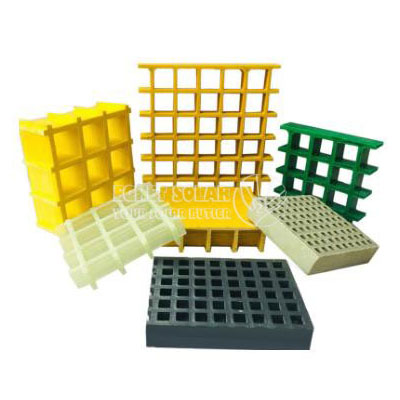Benefits of Fiberglass Walkways
2024-05-22
Fiberglass walkways are specialized pedestrian paths made from fiberglass-reinforced plastic (FRP). These walkways are designed to provide a durable, non-slip surface for various applications, especially in environments where traditional materials like wood or metal might not perform well. Here’s a detailed overview of fiberglass walkways, their benefits, applications, and considerations for installation and maintenance:
Benefits of Fiberglass Walkways
1. Durability:
- Resistant to corrosion, rust, and rot, making them ideal for harsh environments.
- High tensile strength and impact resistance.
2. Non-Slip Surface:
- Typically feature a textured surface that provides excellent traction, even in wet or oily conditions.
3. Lightweight:
- Easier to handle and install compared to metal or concrete alternatives.
- Reduced transportation and installation costs.
4. Low Maintenance:
- Require minimal maintenance due to their resistance to weathering, chemicals, and biological agents.
5. Non-Conductive:
- Electrically non-conductive, making them safe for use in areas where electrical hazards may be present.
6. Fire Resistance:
- Many fiberglass walkway products are designed to be fire retardant, adding an extra layer of safety.
Applications
1. Industrial Settings:
- Chemical plants, oil refineries, and factories where exposure to harsh chemicals and corrosive substances is common.
2. Marine Environments:
- Docks, piers, and offshore platforms where exposure to saltwater can cause rapid degradation of other materials.
3. Public Infrastructure:
- Pedestrian bridges, boardwalks, and observation platforms in parks and recreational areas.
4. Utility and Power Facilities:
- Power plants and electrical substations where non-conductive properties are crucial.
5. Agricultural and Food Processing:
- Environments requiring hygienic, easy-to-clean surfaces.
Considerations for Installation
1. Site Preparation:
- Ensure the ground is properly prepared and leveled.
- Check for any specific requirements related to load-bearing capacity.
2. Supporting Structures:
- Fiberglass walkways need proper support structures, such as frames or beams, often made from compatible materials like FRP or coated steel.
3. Fastening Methods:
- Use appropriate corrosion-resistant fasteners and fittings.
- Follow manufacturer recommendations for spacing and secure attachment.
4. Custom Sizing and Fitting:
- Fiberglass panels can often be custom-cut to fit specific site dimensions.
- Prefabricated modules are available for standard sizes and configurations.
Maintenance Tips
1. Regular Cleaning:
- Periodically clean the walkway to remove dirt, debris, and potential contaminants.
- Use mild detergents and water for cleaning, avoiding harsh chemicals that might damage the surface.
2. Inspection:
- Regularly inspect the walkway for signs of wear, damage, or loosening of fasteners.
- Address any issues promptly to maintain safety and longevity.
3. Repairs:
- For minor surface damages, repair kits specific to fiberglass materials can be used.
- For significant damage, replacing affected panels might be necessary.
Conclusion
Fiberglass walkways provide a durable, low-maintenance, and safe solution for various industrial, marine, and public applications. Their resistance to corrosion, non-slip properties, and lightweight nature make them a preferred choice in challenging environments. Proper installation and regular maintenance will ensure these walkways remain functional and safe for extended periods.



